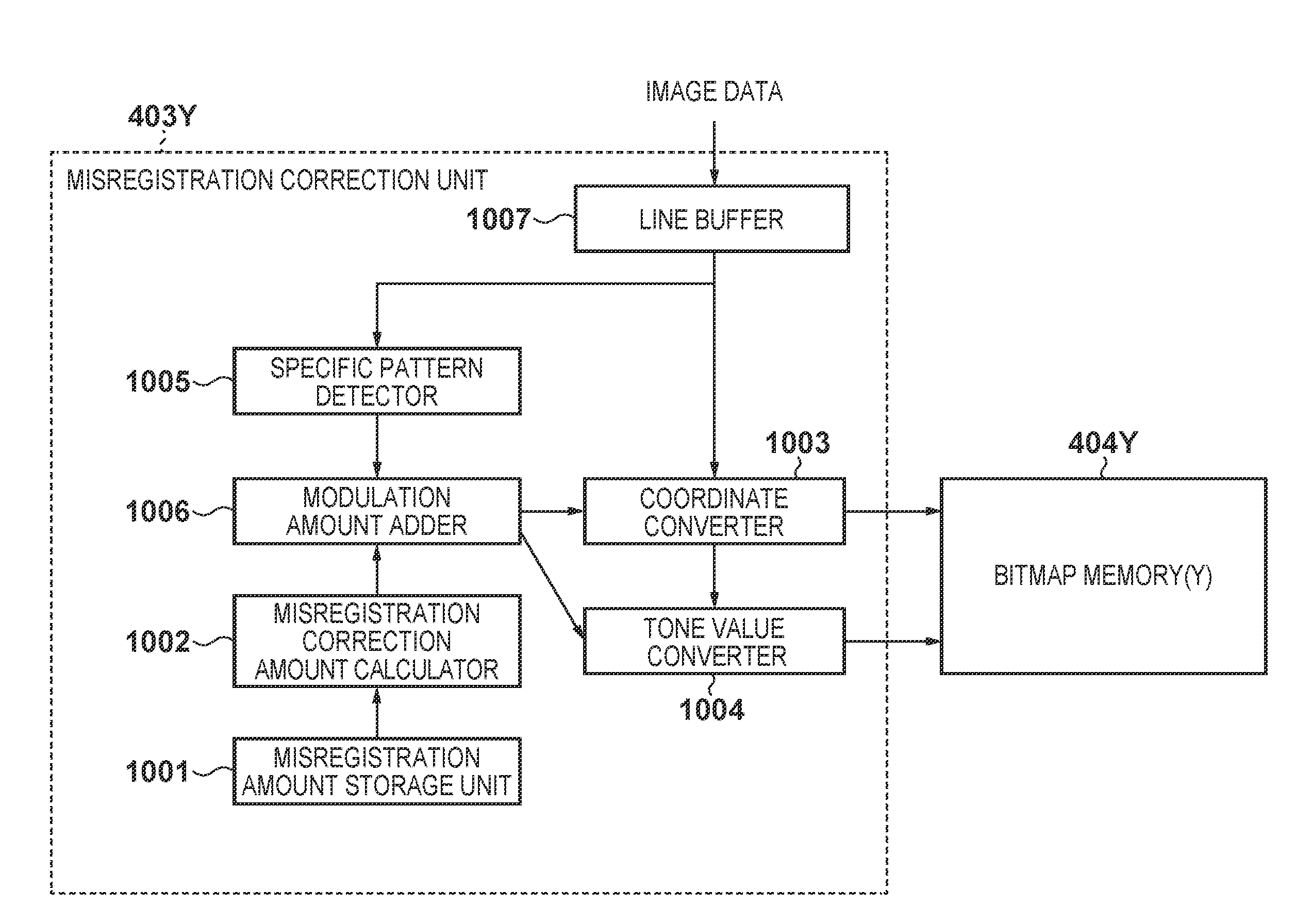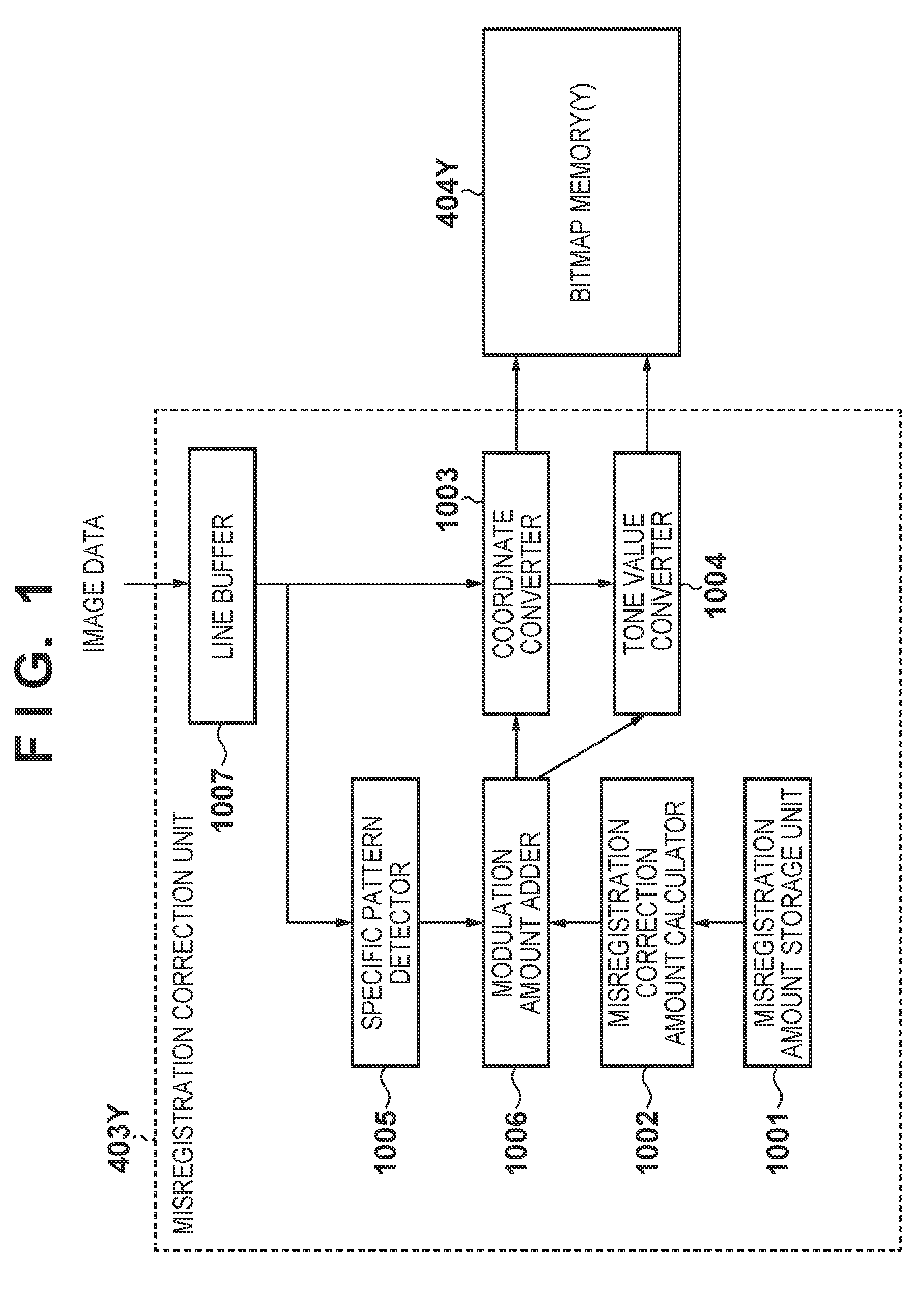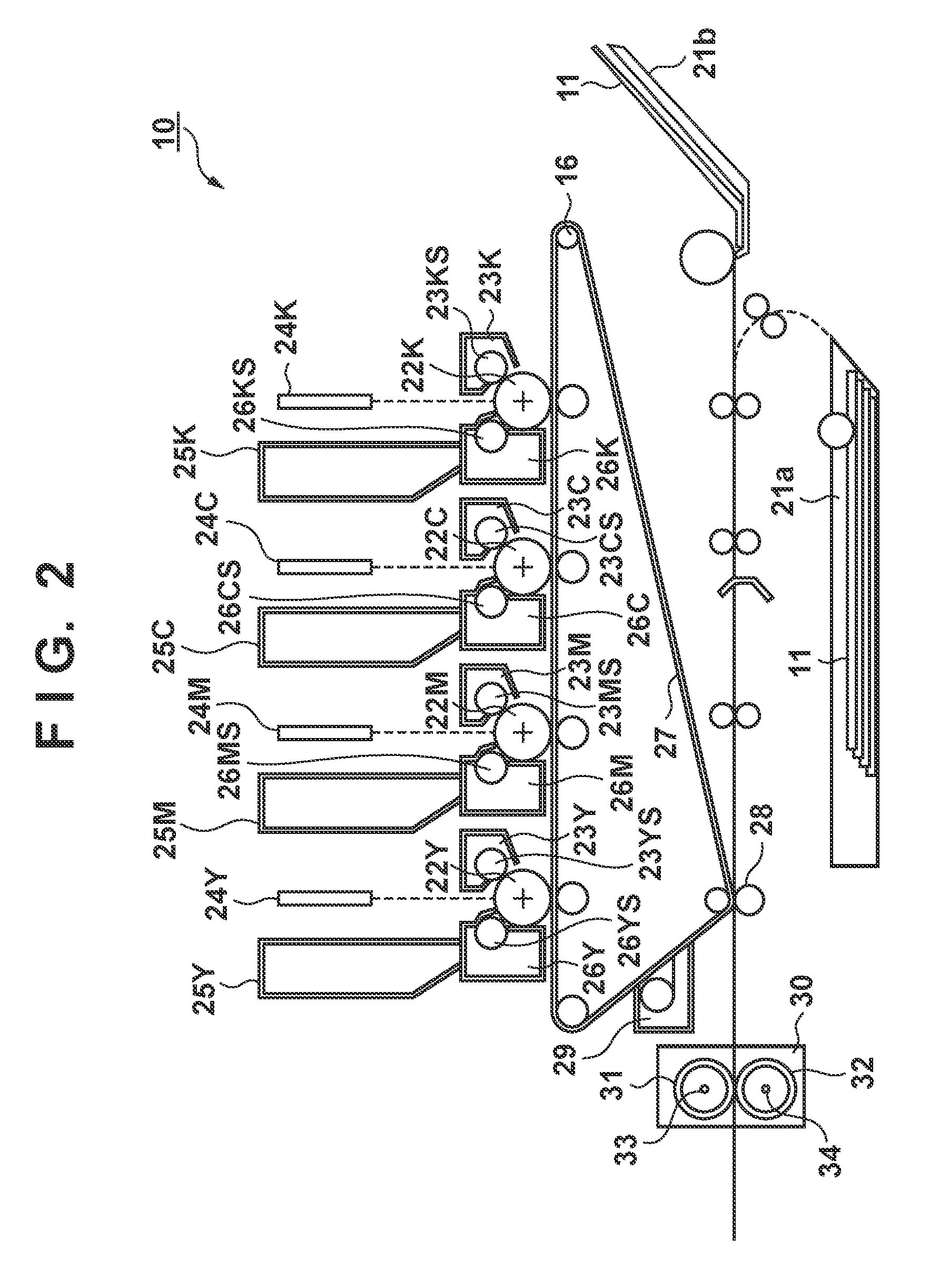Image processing apparatus, control method of image processing apparatus, image forming apparatus, and storage medium
a control method and image processing technology, applied in the field of image processing apparatus, can solve the problems of color misregistration, image forming apparatus often suffers a tilt and curvature of scanning lines, color misregistration, etc., and achieve the effect of removing density unevenness
- Summary
- Abstract
- Description
- Claims
- Application Information
AI Technical Summary
Benefits of technology
Problems solved by technology
Method used
Image
Examples
first embodiment
[0049]The first embodiment will explain a tandem type 4-drum, multi-color image forming apparatus which adopts an intermediate transfer belt based on an electrophotography system as an application example of the present invention.
[0050]
[0051]The arrangement of an image forming apparatus 10 will be described first with reference to FIG. 2. In this embodiment, the image forming apparatus 10 is a color image forming apparatus which forms an image at a resolution of 600 dpi. The image forming apparatus 10 forms electrostatic latent images respectively on surfaces of photosensitive drums (photosensitive members) 22Y, 22M, 22C, and 22K (to be described as “22Y, 22M, 22C, and 22K” hereinafter for the sake of simplicity; the same applies to other members) in accordance with an exposure control signal generated using pulse width modulation (PWM) by an image processing unit (an image processing unit 400 shown in FIG. 4). Since these electrostatic latent images are developed using toners of re...
first example
[0140]A case will be described first wherein misregistration correction is applied to image data of an input image including a thin line having a 2-dot width along the main scanning direction, as shown in FIG. 15A. In FIGS. 15A to 15E, respective pixel values (tone values) of the image data are expressed by numerical values ranging from 0 to 100(%). FIGS. 15B and 15C show results of the misregistration correction processing for partial regions of the image data shown in FIG. 15A. More specifically, FIGS. 15B and 15C respectively show the results of the misregistration correction processing without adding modulation amounts according to this embodiment to Δy for a region in which misregistration correction amounts Δy are near 0 (dot) and for that in which misregistration correction amounts Δy are near 0.5 (dots). Note that the misregistration correction processing includes the aforementioned coordinate conversion processing and tone conversion processing.
[0141]In the image data shown...
second example
[0144]Next, a case will be described below wherein the misregistration correction is applied to image data of a fine image in which dots are arranged checkerwise, as shown in FIG. 16A. FIGS. 16B and 16C show results of the misregistration correction processing for partial regions of the image data shown in FIG. 16A as in FIGS. 15A to 15E. More specifically, FIGS. 16B and 16C respectively show the results of the misregistration correction processing without adding modulation amounts according to this embodiment to Δy for a region in which misregistration correction amounts Δy are near 0 (dot) and for that in which misregistration correction amounts Δy are near 0.5 (dots). Note that the misregistration correction processing includes the aforementioned coordinate conversion processing and tone conversion processing.
[0145]In the image data shown in FIGS. 16B and 16C, although dot sizes on the image data appear to be equal to each other, dot sizes when they are visualized on printing mat...
PUM
 Login to View More
Login to View More Abstract
Description
Claims
Application Information
 Login to View More
Login to View More - R&D
- Intellectual Property
- Life Sciences
- Materials
- Tech Scout
- Unparalleled Data Quality
- Higher Quality Content
- 60% Fewer Hallucinations
Browse by: Latest US Patents, China's latest patents, Technical Efficacy Thesaurus, Application Domain, Technology Topic, Popular Technical Reports.
© 2025 PatSnap. All rights reserved.Legal|Privacy policy|Modern Slavery Act Transparency Statement|Sitemap|About US| Contact US: help@patsnap.com



